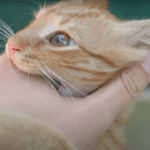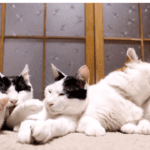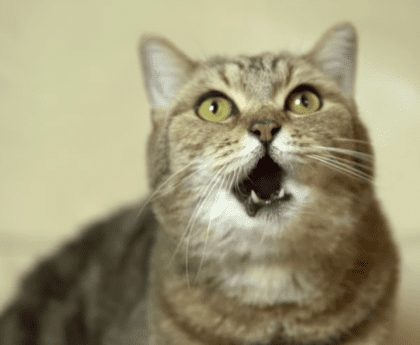- How Much Attention Does a Cat Need? Exploring Your Feline Friend’s Social Quotient
How Much Attention Does a Cat Need? Exploring Your Feline Friend’s Social Quotient
Introduction
When you bring a cat into your home, you embark on a journey filled with companionship, mystery, and the soft purrs of contentment. Cats are intriguing creatures that often seem aloof, yet they have their own unique way of seeking and enjoying attention. As a cat owner, it’s important to understand just how much attention your feline friend requires to lead a happy and fulfilling life.
The Social Spectrum of Cats
Unveiling the Independent Nature
Cats have a reputation for being independent animals. They often display a self-reliant demeanor, which leads many to believe they don’t need attention at all times. Unlike dogs that thrive on constant interaction, cats are known for their solitary pursuits and solitary hunting instincts. This independent streak is deeply rooted in their nature.
The Myth of Solitude
However, labeling cats as purely solitary creatures is a misconception. While they might not exhibit the same exuberant excitement as dogs when you return home, cats do form strong bonds with their human companions. They often choose specific times to seek interaction, and understanding these cues is crucial.
Understanding Your Cat’s Signals
Reading Feline Body Language

Cats have a rich language of their own, conveyed through subtle body movements. The twitch of
a tail, the position of their ears, and the dilation of their pupils all convey specific messages. Learning to read these signals can provide insights into when your cat is open to attention and when it’s best to give them space.
Differentiating Between Playfulness and Isolation
It’s essential to distinguish between your cat’s playfulness and their desire for solitude. Engaging your cat in play not only provides mental stimulation but also strengthens your bond. Interactive toys and activities can be a great way to capture their interest and spend quality time together.
Factors Influencing Attention Needs
Breed and Personality Traits
The amount of attention a cat needs can vary based on their breed and individual personality traits. Some breeds, like the Siamese and the Maine Coon, are known for their high levels of sociability and demand for attention. On the other hand, more reserved breeds might prefer intermittent interactions.
Life Stages Matter
A cat’s age and life stage play a significant role in their attention requirements. Kittens are naturally more energetic and curious, necessitating more playtime and supervision. As they mature, their energy levels may decrease, but the need for companionship remains.
Nurturing a Happy and Content Cat
Creating an Enriched Environment
To cater to your cat’s attention needs, provide an enriched environment with various stimuli. Scratching posts, climbing trees, and cozy hiding spots can offer opportunities for exploration and engagement. Rotating toys and introducing new ones can keep their interest piqued.
Setting a Routine
Cats are creatures of habit, and establishing a routine can help them feel secure and content. Regular feeding times, play sessions, and quiet bonding moments can contribute to a harmonious coexistence.


Providing Quality Attention
The Power of Touch
Physical contact is a powerful way to show your cat affection. Many cats enjoy gentle strokes, chin rubs, and even light massages. Pay attention to your cat’s reactions – they will let you know if they’re enjoying the touch or if they’d prefer you to stop.
Interactive Play Sessions
Engaging your cat in interactive play sessions is a fantastic way to bond and provide mental stimulation. Use toys that mimic prey, encouraging your cat to stalk, pounce, and chase. These activities tap into their natural instincts and provide an outlet for pent-up energy.
Tailoring Attention to Individual Cats
Recognizing Introverted Cats
Just like humans, cats have different personalities. Some are extroverted and thrive in social situations, while others are introverted and prefer solitude. Respect your cat’s personality and provide attention in a way that aligns with their comfort level.
Meeting Extroverted Cats’ Needs
Extroverted cats crave interaction and might even follow you around the house. Set aside time each day for dedicated play and cuddle sessions. These cats often enjoy perching on your lap while you work or watch TV.
Maintaining Balance in Attention


Avoiding Overstimulation
While it’s important to provide attention, overstimulation can lead to stress. Cats have a threshold for how much interaction they can handle before they become agitated. Learn to recognize when your cat has had enough and give them space.
The Value of Alone Time
Just as cats need attention, they also need moments of solitude. Cats use these moments to groom, explore, and recharge. Ensure they have cozy spots where they can retreat when they need some “me time.”
Fostering Trust and Affection
Patience and Consistency
Building a strong bond with your cat takes time. Be patient and consistent in your interactions. Over time, your cat will learn to associate you with positive experiences, deepening the connection between you.
Respectful Introductions
If you have a new cat, take the time to introduce yourself gradually. Allow them to approach you on their terms. Avoid forcing interactions, as this can create fear and reluctance.


In the world of feline companionship, understanding your cat’s attention needs is a delicate dance. They may not demand attention as overtly as some other pets, but their desire for connection is undeniable. By tuning into their cues, respecting their boundaries, and offering both quality interaction and alone time, you can provide the attention your cat craves while fostering a happy and harmonious relationship.
FAQs
- Do all cat breeds require the same level of attention?
- Different cat breeds have varying attention requirements. Some are more sociable than others and crave more interaction.
- Can I leave my cat alone for extended periods?
- While cats are more independent, leaving them alone for too long regularly can lead to loneliness and behavioral issues.
- How can I tell if my cat is stressed due to lack of attention?
- Changes in eating habits, excessive grooming, or increased aggression might indicate stress in cats.
- Are there specific playtime activities that cats enjoy?
- Cats often enjoy activities that mimic hunting behavior, such as chasing laser pointers or pouncing on feather toys.
- Is it possible for a cat to become too clingy?
- Some cats can develop separation anxiety and become overly clingy if their attention needs are not met consistently.
- Are there signs that my cat is content and well-attended to?
- Content cats often have relaxed bodies, half-closed eyes, and may even purr softly when you interact with them.
- Can I train my cat to enjoy more attention if they’re introverted?
- While you can encourage interaction, it’s essential to respect your cat’s personality. Pushing too hard can lead to stress.
- Is talking to my cat a form of attention they enjoy?
- Cats are responsive to tone and might enjoy the soothing sound of your voice. However, not all cats are fans of excessive noise.
- What if my cat suddenly starts seeking more attention than usual?
- Sudden changes in behavior might indicate an underlying health issue. Consult your veterinarian to rule out any medical concerns.
- How do I ensure my cat’s attention needs are met when I have a busy schedule?
- A. Even short, dedicated attention periods can make a difference. Incorporate play and cuddle sessions into your daily routine.





